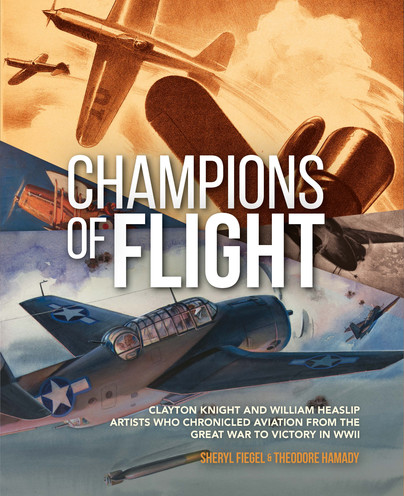
Format: Hardback
Pages: 304
ISBN: 9781612007793
Pub Date: 30 Nov 2019
Illustrations: 220 color images, 200 b/w images
Description:
Champions of Flight celebrates the work of Clayton Joseph Knight (1891–1969) and William John Heaslip (1898–1970), the two preeminent American aviation artists of their time, who chronicled the golden age of aviation (1927–1945) – from Charles Lindbergh's epochal transatlantic flight through the most devastating war in world history. Knight and Heaslip were experienced military men and formally trained artists who, combining an authenticity of experience and an artistic mastery of illustration, produced powerful artwork that influenced a generation of Americans, creating air-minded adults and youngsters, many of whom flocked to US military service after Pearl Harbor. Aviation became deeply embedded into America’s culture during the 1920s, 1930s and 1940s.
Americans became fascinated by aviation celebrities, watched air spectacles, aviation movies and newsreels, and devoured books, aviation industry ads, magazine articles, and Sunday comics featuring pilot heroes. Artists Knight and Heaslip – both of whom were adept as draftsmen, painters and printmakers – fuelled the imagination of these Americans through prolific illustrations and artwork that appeared in many diverse publications of the time. Over a period of almost twenty years, Clayton Knight and William Heaslip championed their love of flight through their art, and they did so with enthusiasm, integrity, and generosity. This book, featuring over 400 illustrations and photos, is a tribute to their legacy.
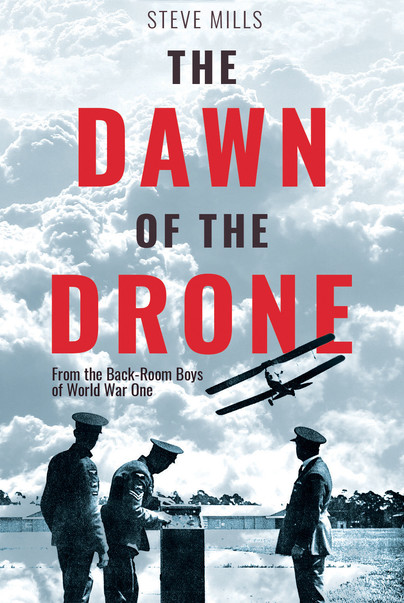
Format: Hardback
Pages: 336
ISBN: 9781612007892
Pub Date: 30 Nov 2019
Illustrations: Up to 100 images
Description:
In the dark days of World War I, when flying machines, radio, and electronics were infant technologies, the first remotely controlled experimental aircraft took to the skies and unmanned radio controlled 40-foot high-speed Motor Torpedo Boats ploughed the seas in Britain. Developed by the British Army’s Royal Flying Corps and the Royal Navy these prototype weapons stemmed from an early form of television demonstrated before the war by Prof. A.
M. Low. The remote control systems for these aircraft and boats were invented at RFC Secret Experimental Works commanded by Prof. Low, which was part of the organization of ‘back-room boys’ in the Munitions Inventions Department. These audacious projects of Low and his contemporaries led to the hundreds of remotely controlled Queen Bee aerial targets in the 1930s and hence to all the machines that we now call ‘drones'. Starting well before WWI and, for the lucky ones, extending well beyond it, the lives of Archibald Low and many of his contemporaries were extraordinary as were the times they lived through. They witnessed many dawns, the coming of the oil and plastics age and of domestic electricity. They experienced vast social improvements and the pasturing of the working horse in favor of motor transport. They were around for the first epic aircraft flights and with the aid of the very technologies that had enabled the development of drones, they saw air travel transformed from the precarious to the routine. It is astonishing that the origins of the first drones are not common knowledge in Britain and that the achievement of these maverick inventors is not commemorated.
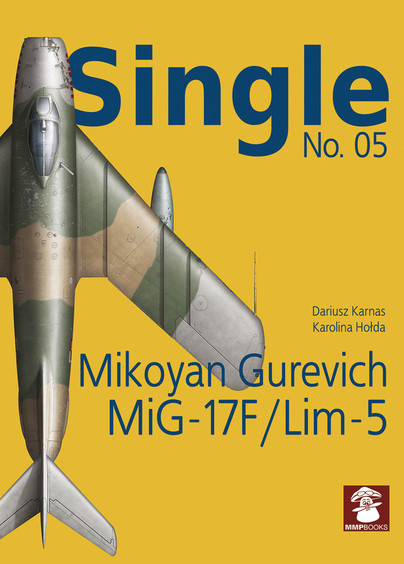
Format: Paperback
Pages: 24
ISBN: 9788365958624
Pub Date: 16 Sep 2019
Series: Single
Illustrations: Scale plans, B&W photos, color profiles
Description:
This book is compilations of the 4-view color profile, scale plans and photo details of the single variant of the Mikoyan Gurevich MiG-17F / Lim-5. Scale plans in 1/72 and 1/48 scales plus drawings from wartime technical manuals. Also photos of the details in B&W and color.
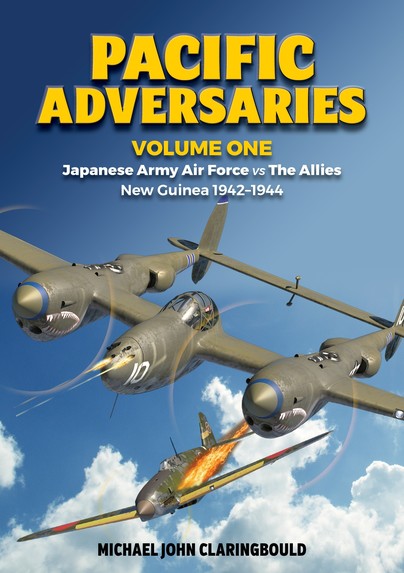
Format: Paperback
Pages: 112
ISBN: 9780646803142
Pub Date: 31 Aug 2019
Illustrations: fully illustrated; colour
Description:
This volume conveys detailed stories of aerial warfare in the South Pacific, chosen because both Japanese and Allied records can be matched for an accurate accounting. Often the actual outcomes are very different to the exaggerated claims made by both sides upon which many traditional histories have relied to date. Further, for each of the chosen stories photographic or other evidence enables an accurate depiction of the aircraft involved.
Through these chosen snapshots Pacific Adversaries portrays the South Pacific conflict as accurately as possible. This first volume describes confrontations between the Japanese Army Air Force (JAAF) and the Allies in New Guinea and the Solomons. JAAF units first arrived in the South Pacific in December 1942 and effectively ceased operations in mainland New Guinea in April 1944. Theirs is a rich and colourful history about which many myths persist. Perhaps the biggest is that their Allied counterparts thought they were mainly fighting “Zeros”, a falsehood still published and accepted to this day. In New Guinea the Allies ratcheted up a grueling, coordinated and unrelenting campaign, destroying most JAAF air power on the ground, not in the air. Their assault against Wewak’s key bases involved an interwoven and complex strategy which eventually overpowered the Japanese. Never before have detailed accounts matched up adversaries so closely and in doing so shine light on key events in Pacific skies so many years ago.
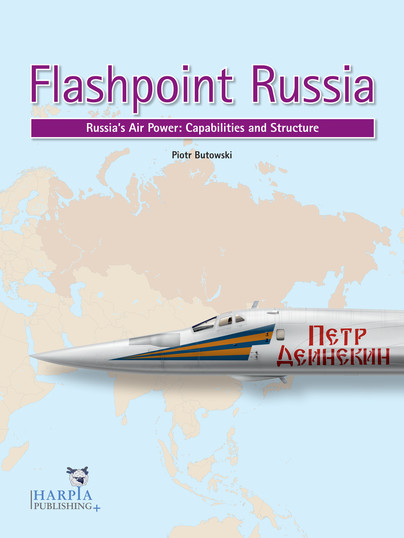
Format: Paperback
Pages: 144
ISBN: 9780997309270
Pub Date: 25 Jun 2019
Description:
Russian military aviation has undergone several upheavals in the post-Soviet era. There have been two driving forces behind these changes. First, the Russian experience of air power in conflicts has led to an increasing integration of the various branches of the armed forces.
Today’s VKS was created as a result of the absorption of the Air Defence Troops (VPVO) by the Air Force (VVS) in 1998, and then a merger of the Air Force with the Aerospace Defence Troops (VVKO) in 2015. Meanwhile, Russia has adapted to financial realities, with insignificant defence spending throughout the 1990s followed by rapid expansion as the global price of oil increased since the beginning of the 21st century. Mass purchases of aircraft and helicopters began in 2009, and the proportion of modern equipment in Russia’s Aerospace Forces now exceeds 75%. The fourth title in Harpia Publishing’s series on Russian military aviation details all fixed-wing aircraft, helicopters and other aerial vehicles operated by Russia’s military air arms. Like the previous volumes, Flashpoint Russia is a comprehensive reference work, presenting organisational structure and the quantitative potential of Russian military aviation. The centrepiece of the book describes the current order of battle of the Aerospace Forces (VKS) and other operators of military aircraft in Russia and includes all the country’s aviation units. Other chapters cover Russia’s approach to purchases of arms and military equipment, and priority air programmes for the next decade.
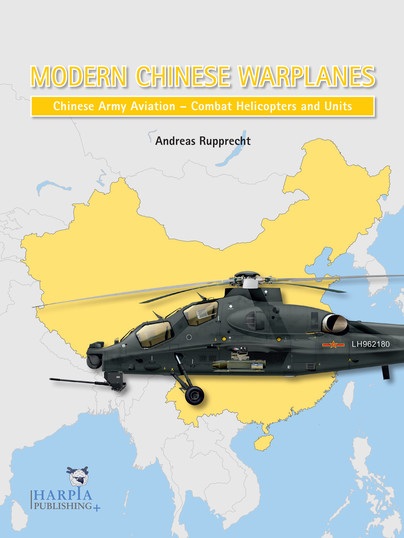
Format: Paperback
Pages: 96
ISBN: 9780997309287
Pub Date: 25 Jun 2019
Description:
Compared to the People’s Liberation Army Air Force and Naval Aviation, the PLA’s Army Aviation is the least known und understood of the country’s air arms. Its formation was only approved in 1986 and it was established as the Army Aviation Corps in January 1988, using helicopters inherited from the Air Force. Beginning as a single regiment, the first true Army Aviation brigade was formed in 2009 and the force has now expanded to around a dozen frontline units operating hundreds of different helicopters.
In its current form, Army Aviation has established itself as a major force in support of the PLA Ground Forces. In April 2017 – and in parallel with China’s other two air arms – the Army Aviation began a dramatic reorganisation. The former PLA Group Armies were restructured, and the aviation units have undergone major changes. This trend has included not only the introduction of larger numbers of more modern helicopters, but also the establishment of newly numbered aviation brigades. Consequently, while the PLA Ground Forces generally face a reduction in numbers, the Army Aviation brigades will probably see expansion, not only in size but also in operational importance. Complementing Harpia’s two fully revised volumes dedicated to the PLAAF and Naval Aviation, this uniquely compact yet comprehensive directory provides a magnificently illustrated, in-depth analysis and directory of modern Chinese Army Aviation air power. It is organised in four parts: the most important military aircraft and their weapons in service today; aircraft markings and serial number systems; recent modernisation efforts and structural reforms and orders of battle for the PLA’s Army Aviation.
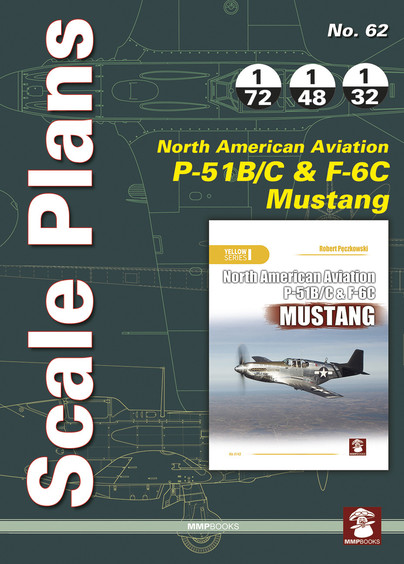
Format: Paperback
Pages: 24
ISBN: 9788365958464
Pub Date: 19 Jun 2019
Series: Scale Plans
Illustrations: 60
Description:
Scale plans in 1/72, 1/48 and 1/32 of the P-51B/C & F-6C Mustang.
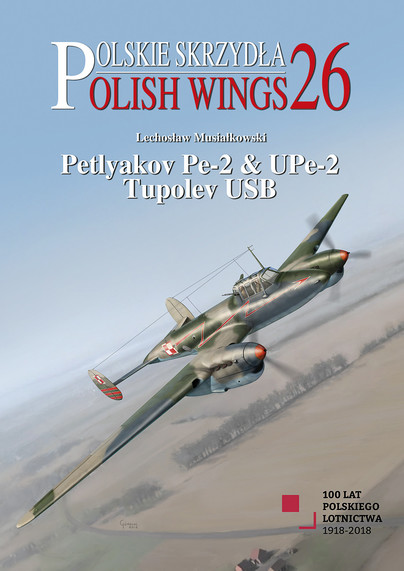
Format: Paperback
Pages: 80
ISBN: 9788365958426
Pub Date: 14 Jun 2019
Series: Polish Wings
Illustrations: 250
Description:
The next book in the popular Polish Wings series is on the famous Russian WW2 bombers in Polish Air Forces. Covers duty of these aircraft during WW2 and postwar period. More than 120 photos, mostly unpublished, and many color profiles.
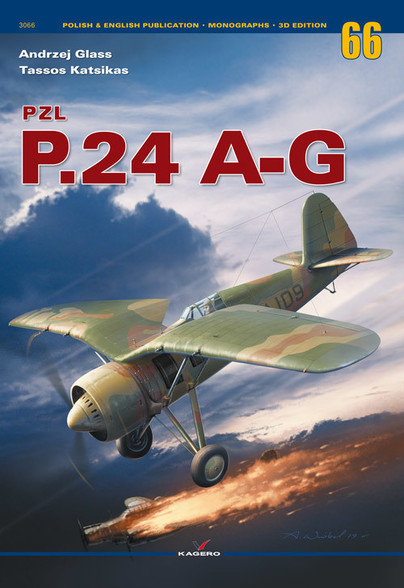
Format: Paperback
Pages: 172
ISBN: 9788366148055
Pub Date: 10 Jun 2019
Series: Monographs
Illustrations: 155 archival photos, 150 profiles, A3 and A4 drawing sheets
Description:
Although built in fewer numbers than the PZL P.11, the PZL P.24 was for a period during the 1930’s the fastest and most heavily armed single-seat fighter in the world.
Having acquired early notoriety at the Paris Salon with their innovative wing design, the P.24 represented the ultimate development of the family of fighter planes designed by Zygmunt Pulawski and saw service in the air forces of four countries: Bulgaria, Greece, Romania and Turkey.
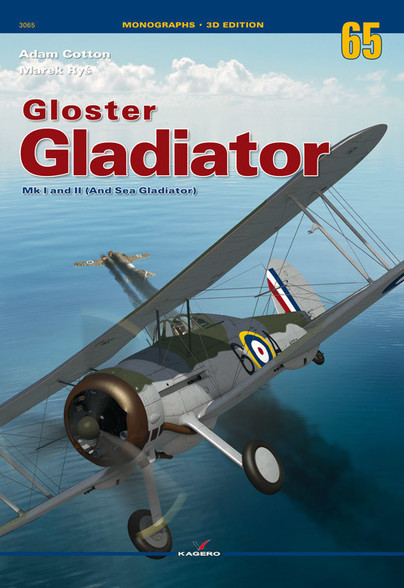
Format: Paperback
Pages: 216
ISBN: 9788365437860
Pub Date: 31 May 2019
Series: Monographs
Illustrations: 120 archival photos, 20 profiles
Description:
The Gloster Gladiator was the very last biplane fighter to enter service with the RAF. Yet, despite being one of the fastest biplanes ever built, it was already obsolete upon its introduction to service in January 1937. Nonetheless, in the first eighteen months of WW2, it garnered many combat plaudits in the skies over the frozen Arctic, the sun-kissed Mediterranean, and the arid deserts of Africa.
In Britain, it provided crucial defense of the RN Fleet anchored at Scapa Flow, and was among the first aircraft sent to France to aid the BEF. Adopted early-on by the FAA and renamed Sea Gladiator, for a time this navalized version represented the nearest thing the service had to a modern fighter as it struggled toward parity with its Axis opponents.This book tells the complete story. The text covers not only the type’s remarkable operational history, but also that of Gloster’s journey to its production. Also examined are the Gladiator’s design and construction, and its subsequent technical development. Second-line duties and service with foreign air forces are also briefly covered. Supporting lavish artwork and 3-D exploded views vividly bring the aircraft to life, making it an ideal reference work for the modeler.
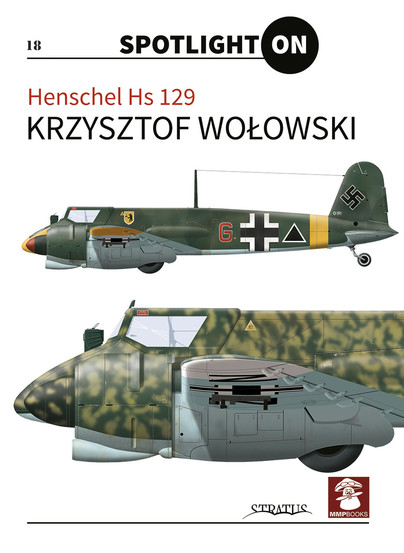
Format: Hardback
Pages: 42
ISBN: 9788365958273
Pub Date: 09 May 2019
Series: Spotlight ON
Illustrations: 40 color profiles
Description:
40 color profiles of the famous Henschel Hs 129, a German WW2 ground-attack aircraft. German and foreign users’ camouflages are shown.
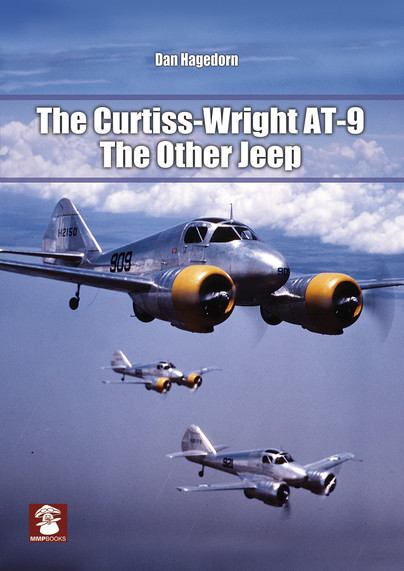
Format: Paperback
Pages: 176
ISBN: 9788365958303
Pub Date: 09 May 2019
Illustrations: 120+ B&W photos, 16 pages of color profiles, scale plans
Description:
This book examines the genesis of the AT-9 design, its competitors and, eventually, comrades-in-arms, with whom AT-9s were always literally the best and the brightest, and looks at the fielding of the aircraft to the 24 initial stations as well as an astonishing number of unusual and special assignments – including assignment to line, tactical units.After producing 791 aircraft between September 1941 and January 31, 1943, and assigning every single one of them, and having served actively and continuously through to VJ-Day, exactly one complete AT-9 survives, and this solitary example is actually a composite of several aircraft.
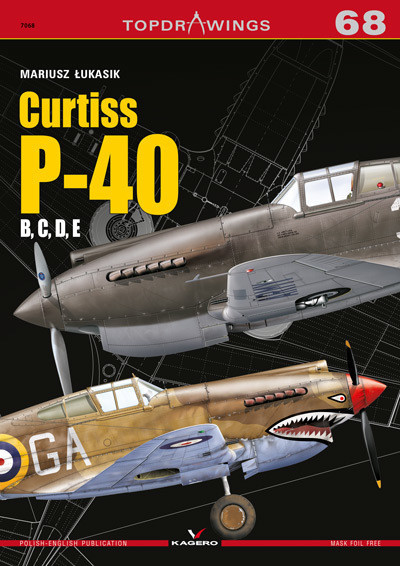
Format: Paperback
Pages: 28
ISBN: 9788366148185
Pub Date: 19 Mar 2019
Series: Top Drawings
Illustrations: 6 color profiles, A4 drawing sheets
Description:
The decision to start the production of the Curtiss P-40 fighter was made primarily due to the relatively low airframe price and the possibility of launching it almost immediately (based on Curtiss P-36s ready fuselages). The P-40 did not have a turbocharger, but despite this the requirements were constantly increasing, especially when it comes to the maximum speed. It was requested to raise it by over 100 km/h (up to 580 km/h).
It required a number of construction changes e.g. new exhaust pipes, new shape and size of the air intake to the carburetor at the top of the engine cover, moving forward the coolers under the nose. After the tests in the NACA wind tunnel it turned out that these changes were not enough. The plane underwent further aerodynamic refinements, using, among others, smooth riveting and retractable tail ring. In the end, the speed was 589 km/h at 4570 m, which gave the green light for serial production.
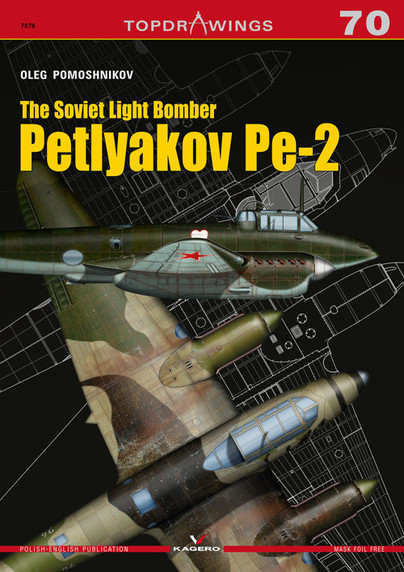
Format: Paperback
Pages: 20
ISBN: 9788366148208
Pub Date: 19 Mar 2019
Series: Top Drawings
Illustrations: Color profiles, A4 and B2 drawing sheets
Description:
Petlakov Pe-2 (Peshka) is the best-known twin-engine light bomber of Soviet aviation in World War II. The plane was susceptible to structural changes, which allowed it to be used as a heavy fighter (also night), a dive bomber or a long reconnaissance plane.Vladimir Petlakov constructed the Pe-2 in prison, where he got in 1937 for allegedly delaying the works on the ANT-42 Tupolev bomber.
Petlakow, while serving the sentence, was appointed the head of the constructors' group, which was to create a fast and durable machine that could freely escort the ANT-42. That is how the VI-100 was made. It was a quite advanced plane for its time (the first flight took place on December 22, 1939). It was a fully metal construction. The machine was equipped with a pressurised cockpit, turbochargers and many advanced electronic systems.
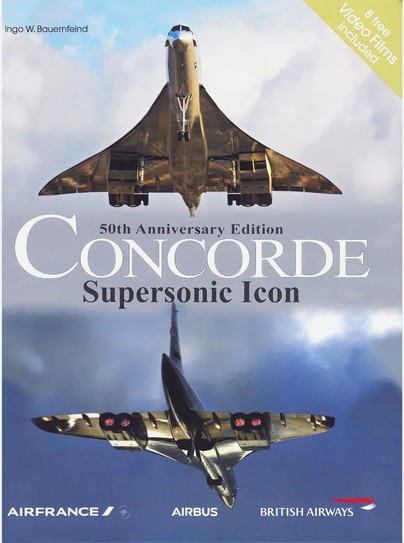
Format: Hardback
Pages: 176
ISBN: 9783981598414
Pub Date: 28 Feb 2019
Illustrations: ca. 300 images
Description:
This lavishly illustrated volume tells the amazing story of Concorde, the supersonic icon that has been capturing the world’s imagination since its maiden flight in 1969. With personal accounts written by former pilots and crew members, it covers Concorde’s history, her technology as well as her undisputed and timeless charisma. Moreover, this volume will focus on her legacy and the ambitious undertaking of bringing one Concorde back to service as a heritage aircraft.
Included is a download video about Concorde.
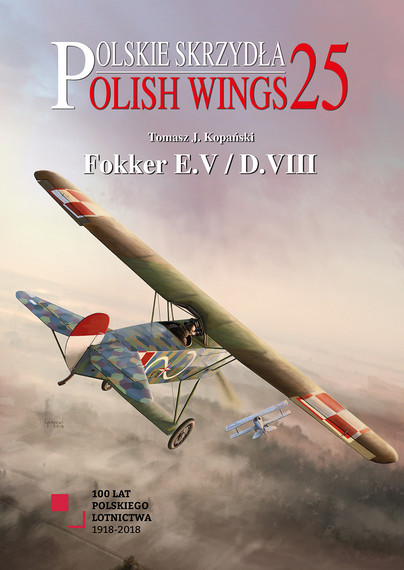
Format: Paperback
Pages: 42
ISBN: 9788365958259
Pub Date: 28 Feb 2019
Series: Polish Wings
Illustrations: 120+ photos, color profiles
Description:
The next book in the popular Polish Wings series is on the famous German WWI fighters in Polish Air Forces. Covers duty of these aircraft during Polish-Bolsheviks war and early 1920s.More than 120 photos, mostly unpublished, and many color profiles.

















